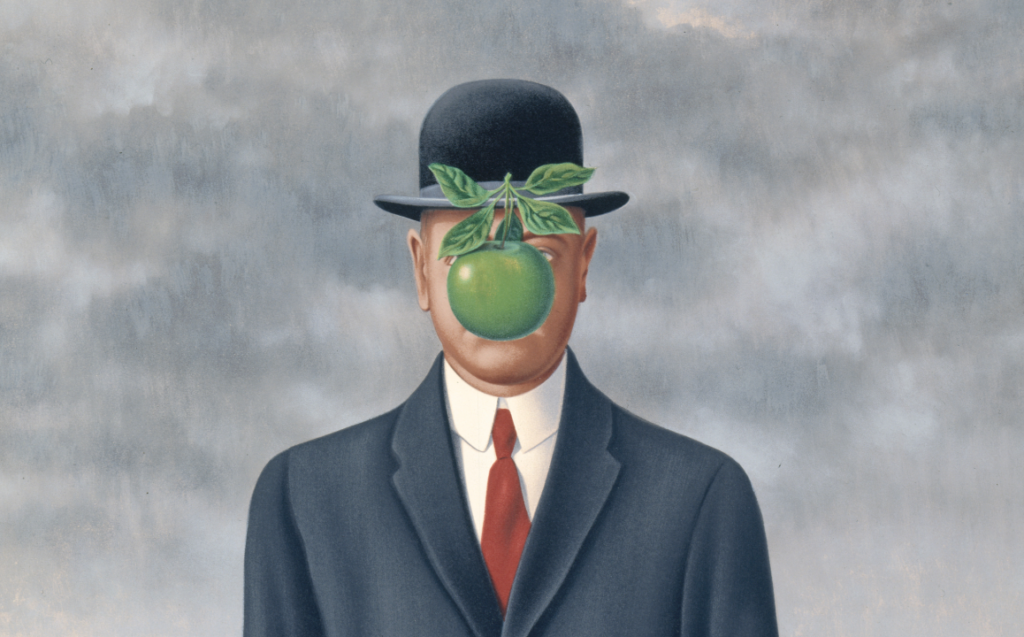An Introduction to René Magritte, and How the Belgian Artist Used an Ordinary Style to Create Extraordinarily Surreal Paintings

With his dark suit, neat haircut, and bowler hat, René Magritte embodied early-twentieth-century Belgian normality. Yet the feelings his work stirred in their viewers were very much the opposite of normal. He had various ways of accomplishing this. One was “to combine two familiar objects and make a new one,” says gallerist-Youtuber James Payne in the new Great Art Explained video above. “Another method was to paint a solid object as if it were a see-through portal. In some paintings he would defy gravity and show heavy objects floating. He would give an unfamiliar name to familiar objects. He would change scale by making small objects huge and large objects impossibly tiny.”
One of Magritte’s particularly effective methods was “to obscure or to hide a face or an object, setting up a conflict between the visible that is hidden and the visible that is present.” The power of this technique is vividly showcased by The Lovers II, from 1928, in which Magritte takes the “cinematic cliché” of the kiss and “disrupts our voyeuristic pleasure by covering the faces in cloth. A moment of collection becomes one of isolation, of sexual frustration. An intimate moment becomes something dark and effortlessly disturbing, something hidden and anonymous.”
Might this have something to do with the death of his mother, who threw herself in a river when he was young? “When her body was eventually found, a nightdress had been dragged up over her naked body and was covering her face.”
The artist himself wouldn’t have thought so. “Psychology didn’t interest Magritte, who avoided any in-depth interpretation of his work,” Payne says, and yet his work “offers so much opportunity for armchair analysis.” Employing an “extreme contrast between the drabness of his style and the extraordinary subject matter,” he demonstrated his understanding that people want to see what’s hidden, that removing what they expect “creates a tension and an anxiety,” and that “if the style of the image doesn’t attract attention, the irrationality of the image becomes even more shocking.” Given Magritte’s current stature, it may come as a surprise to hear that his painting didn’t earn him much in his lifetime. But given his evident ability to manipulate viewers’ thoughts and feelings through visual means alone, it won’t come as a surprise to hear that he made his money running an advertising agency.
Related content:
René Magritte’s Early Art Deco Posters (1924-1927)
The Home Movies of Two Surrealists: Look Inside the Lives of Man Ray & René Magritte
An Introduction to Surrealism: The Big Aesthetic Ideas Presented in Three Videos
Based in Seoul, Colin Marshall writes and broadcasts on cities, language, and culture. His projects include the Substack newsletter Books on Cities, the book The Stateless City: a Walk through 21st-Century Los Angeles and the video series The City in Cinema. Follow him on Twitter at @colinmarshall or on Facebook.


